Author: Ignas, DeFi researcher; Translation: Jinse Finance xiaozouo
1. Ostium
Perpetual contract exchanges are a super competitive field, with leaders constantly changing (from dydx to GMX to Hyperliquid).
However, Ostium is very unique. They introduced on-chain leveraged trading for the S&P 500, Dow Jones, Nikkei, gold, copper, and many other traditional financial (TradFi) assets.
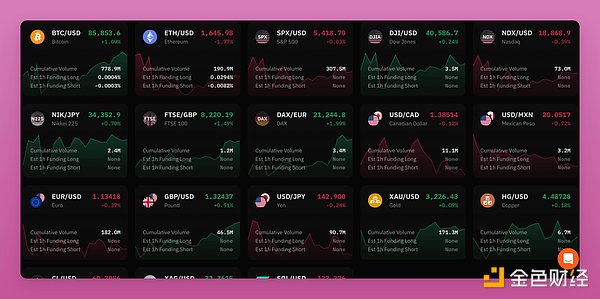
These "real world assets" (RWAs) are not actually backed by anything, but Ostium brings on-chain synthetic price exposure through oracle price feeds. Built on Arbitrum.
As far as I know, this is not the first time someone has tried to do this, but Ostium has gained good attention:
* The total locked value (TVL) in the Ostium liquidity pool (OLP) reached $46 million, and its function is similar to HLP on Hyperliquid to generate trading and clearing fees.
* 845 daily active users and 2225 weekly active users.
* Total trading volume reached $2.1 billion.
Ostium launched a points campaign for traders and OLP depositors from March 31.
I believe that on-chain RWA trading, even for synthetic assets, has great potential for many cryptocurrency native users. It helps us avoid withdrawing stablecoins to traditional financial platforms.
This may be a good airdrop opportunity for early users.
2. Axiom
You may have heard of Solana trading platforms such as Photon, BullX, GMGN, and BonkBot, but that was in 2024.
Axiom, backed by Y Combinator, started operations in February and has gained dominance in the category (44% of the total share. The dark blue part in the figure).
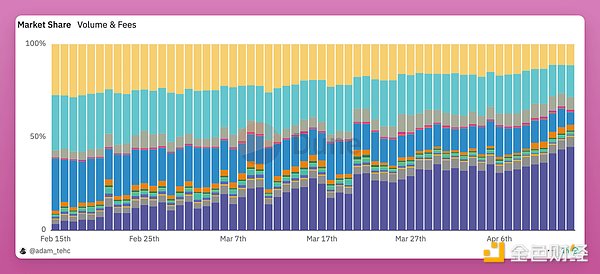
Interestingly, the Axiom official X account and co-founders are very low-key on X and post very little. Marketing seems to be spread by word of mouth.
More importantly, Axiom's ultimate goal is to enable trading of any asset on any chain, including perpetual contracts (launched via Hyperliquid), yield agreements, wallet tracking and other functions.
When the Solana trading ecosystem becomes active again, Axiom can really benefit from it.
The points activity has been launched, including trading, tasks and referrals. I am more optimistic about the Axiom token.
3. Fragmetric
Let’s not talk about trading applications.
Fragmetric reminds me of the Solana DeFi craze in early 2023/2024, when Jito and Jupiter conducted generous airdrops.
If you missed Solayer (after all, LAYER did rise well after the airdrop), this is your second chance.
I have two news for you about Fragmetric:
* Bad news: We are not one of the early ones, deposits were opened as early as October 2024.
* Good news: We are not too late, because the token has not yet been launched, points are still being issued, and most of the deposits began to flow in in late January. And this is a simple deposit and forget about yield farming model.
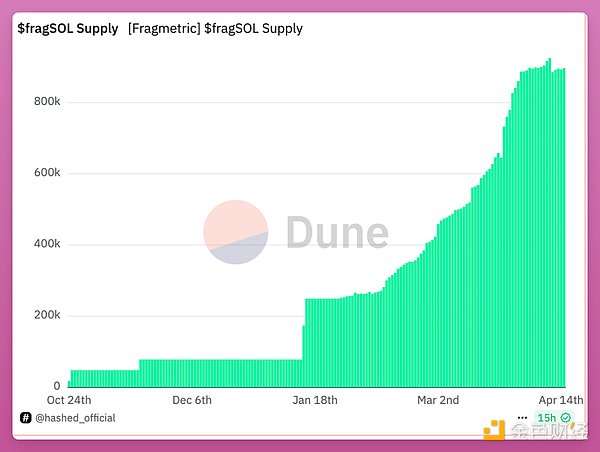
Anyway, Fragmetric is a liquidity re-staking protocol built on Solana.
When you deposit SOL or Liquidity Staking Tokens (LSTs) into Fragmetric, you get Liquidity Staking Tokens (LRTs) like fragSOL or fragJTO.
Re-stakers become SANG (SolanA Network Guardians), a community of guardians who protect the Solana ecosystem. You can also earn additional rewards by protecting NCN/AVS (New Decentralized Services).
If you have idle SOL and want to diversify the risk of platforms such as Kamino, Marginfi, Solayer, etc., this is a very simple strategy.
The total locked value (TVL) is $125 million, so it’s not too early.
F Points
F Points is Fragmetric’s loyalty system, which can be earned by simply holding LRTs. Or you can get bonus points by wrapping LRTs (for example, using fragSOL for DeFi wfragSOL).
Fragmetric has raised a total of $12 million in funding. The latest round of $5 million was invested by RockawayX, Robot Ventures, Amber Group, and BitGo.
In short, this is a super simple SOL strategy.
4. Loopscale
Now, Loopscale allows you to earn more income on top of your newly acquired fragSOL.
Loopscale brings innovation to Solana DeFi through modular, order-book-based lending.
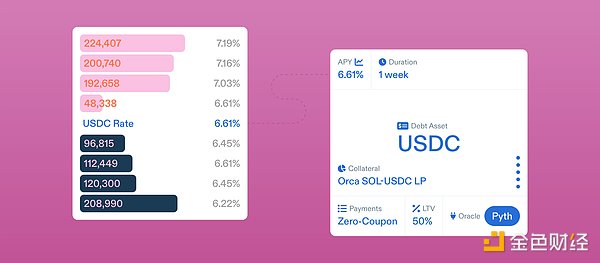
This is different from the liquidity pool model used by Kamino, Marginfi, and even Aave:
The Loopscale documentation describes it this way: "By replacing liquidity pools and algorithmic interest rates with direct order book matching, Loopscale improves capital efficiency, enables more precise risk management, and supports new market types that are difficult to achieve with traditional DeFi architectures."
You can borrow, loop (similar to Kamino's one-click leverage for multiplication), or join the vault.
Since Loopscale ended closed beta 5 days ago, they launched the Genesis Treasury, which offers 6x points until the cap is reached (which is almost there!)

A simple strategy is to JUPSOL loop operations with an annualized yield (APY) of 22%+ (similar to Kamino doubling). You can get 2x points.
I asked them about the decoupling. They said that the short-term LST/LRT decoupling will not liquidate your loop operations, "but staking returns are lower than borrowing costs or validator performance is poor."
If you’re more aggressive and want to get 32% APY on SOL, there’s another vault for your fragSOL:
* Deposit SOL into Fragmetric here.
* Get PT-fragSOL at Exponent (Solana’s Pendle).
* Loop PT-fragSOL on Loopscale to get 32% APY.
Note: You’ll give up Fragmetric’s bonus points, but get a higher fixed APY on Loopscale.
The total locked value is currently around $40M, so it’s not too late.
Loopscale has strong backing: CoinFund, Solana Ventures, Coinbase Ventures, Jump, and Room40.
5. Upshift
Do you feel that DeFi has become too complicated and it’s becoming increasingly time-consuming to find opportunities with high risk-adjusted returns?
Don’t worry anymore.
On Upshift, you can deposit crypto into vaults managed by "sophisticated hedge funds" and investment managers.
Yield strategies include recurring operations, as well as more complex products involving delta-neutral hedging, OTC options, or systemic stablecoin decentralized exchange market making.
Upshift has 4 core products:
* Lending: Providing on-chain overcollateralized loans to verified institutions.
* DeFi Yield: Vaults curated by top DeFi funds.
* Vault-as-a-Service: Providing plug-and-play vaults for protocols.
* Synergy: Borrowing through vaults to improve yield and capital efficiency.
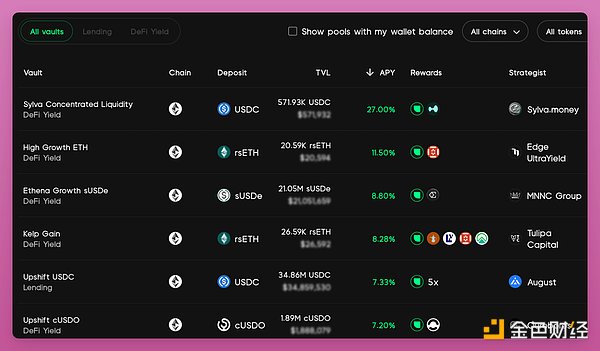
As of this writing, the total locked value is $236 million, which is not bad. They are offering 5x points until deposits reach $750 million.
To be honest, my favorite strategy is Hyperbeat Ultra HYPE, which manages my HYPE yield farming on the HyperEVM ecosystem.
Upshift is backed by Dragonfly VC, Hack VC, 6MV, and Robot Ventures.
6. Level
If you hold any stablecoin, please note:
Level is a stablecoin protocol that issues lvlUSD, a stablecoin backed by USDC and USDT, which generates income through blue chip lending protocols.
You deposit USDC → USDC is deposited in Aave/Morpho, etc. → You get lvlUSD, which can be used in other DeFi areas.
You can simply pledge lvlUSD into slvlUSD with increased value, and get an annualized yield of 8.48%.

But to earn XP points, you need to farm lvlUSD in DeFi protocols: deposit lvlUSD into Curve, Spectra or Pendle (current PT yield is 13%), etc.
As of writing, its total locked value is $138.26 million, which is doing quite well. Level's social account followers on X are also growing, which is a good sign when the token falls.
Level is backed by Dragonfly VC and Polychain.
Level is not the first protocol to try this model, and many protocols have failed to achieve product-market fit. However, with impressive returns and an upcoming airdrop, it could be a promising opportunity.
7. Huma
Huma is the hottest narrative for stablecoins and real-world assets (RWA), but getting exposure is hard. You can wait for Circle to go public, but don't expect a 10x increase in one day.
Payment financing (PayFi) network Huma recently raised $38 million from Hashkey Capital, Folius Ventures, Stellar, and others.
Huma previously merged with Arf, a Circle-backed protocol that provides liquidity and settlement services for cross-border payments.
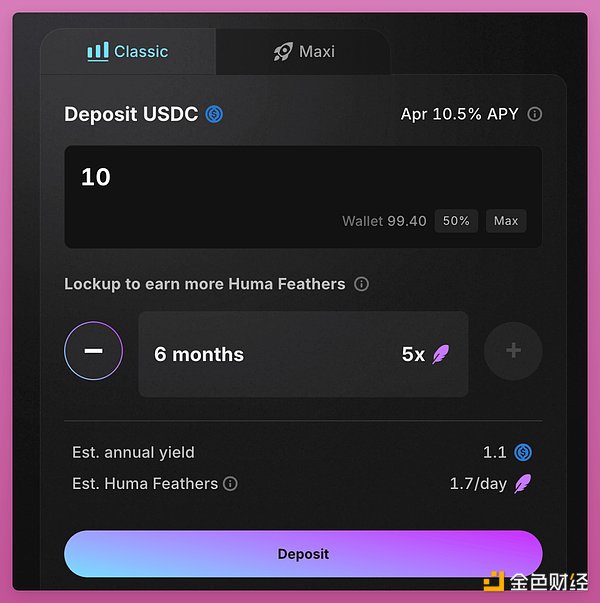
So what is unique about Huma?
Payments take days and are expensive. Banks make most of the profits. Huma solves these problems by using blockchain and stablecoins (USDC) to enable funds to move instantly, globally and at low cost.
Huma accelerates real-world payments through stablecoins and liquidity on the chain. Financial institutions can settle large amounts of funds globally, replacing the need for legacy systems such as SWIFT or pre-funding mechanisms.
There are two ways to earn income here:
* Classic mode: stable monthly yield + Feathers (points). Currently more than 10%.
* Maxi mode: 0% annualized yield, but if you are optimistic about Huma's future governance token HUMA, you can get 5x Feathers points.
Now, you can also deposit USDC → get PST (PayFi Strategy Token), an interest-bearing token that can be used in Solana DeFi (exchangeable on Jupiter and collateralized for borrowing on Kamino).
Even locked positions can be exited early through the PST liquidity pool.
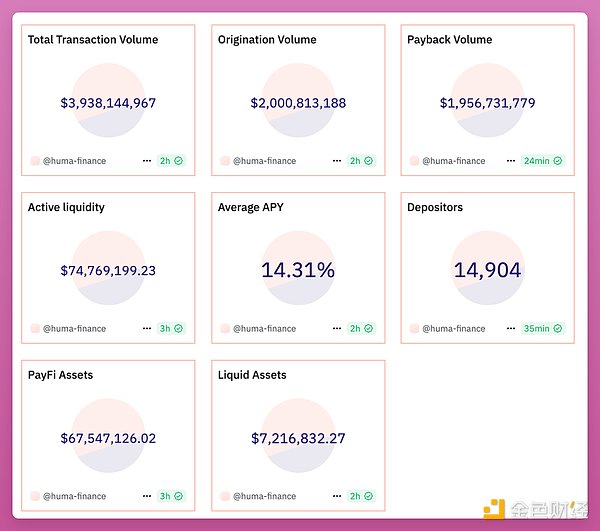
Currently, Huma:
* USDC annualized yield is 10.5%.
* $74.7 million is used to support PayFi transaction income.
* $7.2 million in liquid assets (stablecoins) are held for emergency use and do not generate income.
So the total locked value of $81 million has performed quite well.
8. DeFi App
You may often see the promotion of DeFi App on X. Not only the number of posts is large, but also the way of promotion surprised me a little.
This will make me more cautious and produce a strange intuition.
The reasons for its bullishness are as follows:
* It has become the third largest decentralized exchange (DEX) aggregator, with a daily trading volume of $229 million and a weekly trading volume of $991 million.
* Raised $6 million in funds from Mechanism Capital, Selini Capital, North Rock Digital and about 50 angel investors at a valuation of $100 million.
* Obviously my Faction ranking in Degen Arena is relatively high. (More on this below)

DeFi App is an all-in-one super app that makes DeFi easy and simple.
From the beta app, the cross-chain swap feature is excellent. No annoying fees, support for Solana and EVM chains. They will add features like yield farming and perpetual trading.
Their token HOME is not yet online, you can do yield farming by exchanging tokens.
That's basically it for now, but!!! You can earn points when you exchange and join the Degen Arena through Faction.
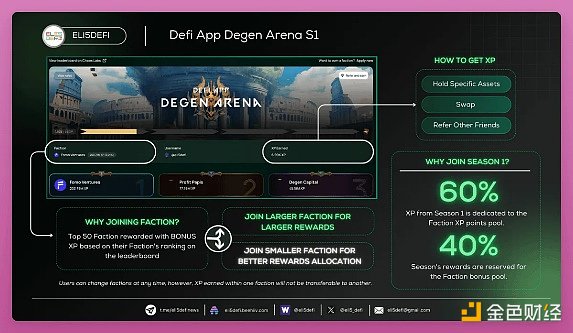
The first 50 factions get extra rewards and early access to new DeFi App features. Why join a faction? In the Degen Arena Season 1 airdrop, HOME tokens have a larger distribution ratio:
* 60% of XP in Season 1 goes to the Faction XP pool.
* 40% of the rewards for the season go to the Faction bonus pool.
I am currently ranked 38th.
9. Slingshot
If there is a mobile app that can redeem all tokens on all chains, it might be Slingshot.
Before you try Slingshot, here are a few things you should know:
* Creating an account is super easy, just like a Web2 app.
* Magic Eden recently acquired Slingshot, which makes a Slingshot token airdrop less likely.
* You can quickly redeem Bitcoin Rune tokens, which is one of the main reasons I like this app.
So if you mainly trade crypto on mobile, Slingshot is a must-try app.
 YouQuan
YouQuan
 YouQuan
YouQuan Hui Xin
Hui Xin Joy
Joy YouQuan
YouQuan Hui Xin
Hui Xin Brian
Brian YouQuan
YouQuan Joy
Joy YouQuan
YouQuan Brian
Brian